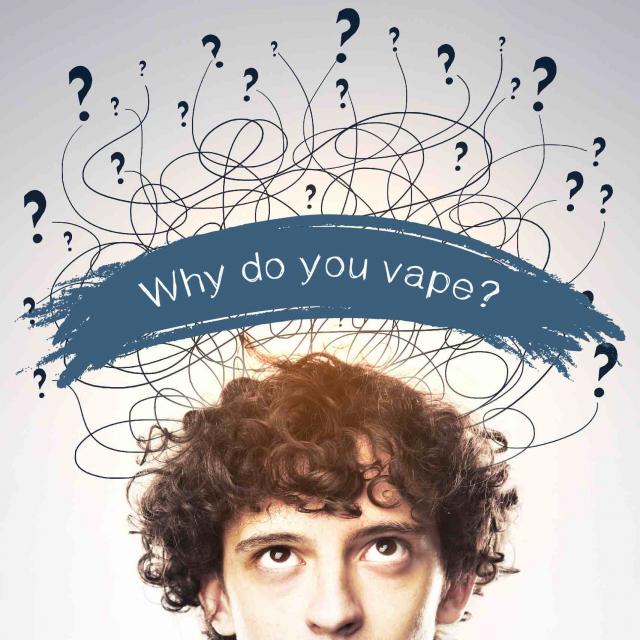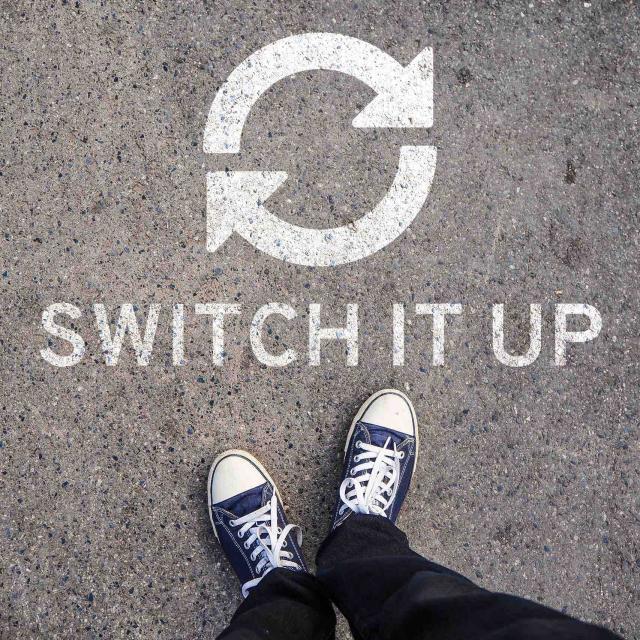Triggers are the things that make you want to vape. They differ by person, but include things like dealing with a stressful situation or seeing other people vape. Understanding your triggers and learning how to deal with them will help you quit vaping for good.

What Are Your Triggers?
Since you started vaping, you’ve built up patterns and routines around when, where, and how you vape. When you quit, it may seem like reminders of vaping are everywhere. These reminders can make it hard to stay vape-free.
You may not be able to avoid everything that reminds you of vaping, especially if you vape often or during many activities throughout the day, but knowing your triggers and having a plan for how to handle them will help you quit for good. Below are some common triggers and suggestions for how to deal with them.
Social Vaping Triggers
Social situations or events – even scrolling through social media – can trigger the desire to vape. For example, you may crave your vape when you:
- See someone use a vape
- Smell aerosol from a vape (sometimes called “vapor”)
- Hang out with people who vape or use another tobacco product
- Go to a party or other social event
- Are offered a vape or a new flavor
- Drink alcohol or go to a bar
- See vapes on social media
- Celebrate a big event
- Go to a concert
How to Handle Social Triggers
You might find it helpful to make some changes to your social life, at least when you’re just starting to quit vaping. Here are some steps to prepare yourself:
- Make a plan. Think about how you will handle social situations when other people are vaping. Practice how you’ll respond if somebody offers you a vape. Keep it simple and direct – “No, thanks. I quit.”
- Avoid places where you know people vape. Going to a bar or to someone’s house where people will be vaping may make it harder to stay quit. Explain to your friends and family that you’re not avoiding them, but that you are avoiding situations that might make you want to vape.
- Ask people not to vape near you. If you are around people using vapes, ask them not to offer you theirs.
- Take a time-out from social media. Unfollow social media accounts with images and videos of vaping. Unsubscribe to emails that link to places that sell vapes, e-liquids, or pods. Hit pause on any shows or movies that show people vaping.
- Plan to not use any tobacco products. Make sure your strategies to avoid vaping include not smoking cigarettes or using any other tobacco products.
Handling social situations that make you want to vape will gradually get easier. Be patient and keep leaning on your friends and family for their support. You can quit vaping and still have a social life. Here are some ways to prepare for the changes in your social life as you quit.
- Lean on your supporters. Tell your family and friends that you are quitting and ask for their help. Spend time with the people who encourage you and are ready to help you accomplish your vape-free goal.
- Find other ways to connect and spend time with people. Remember that vaping doesn’t define you or your relationships. You and the important people in your life have plenty of things in common besides vaping. Remind yourself what those things are and embrace them.
- Accept change. Quitting vaping is a big change. Keep in mind that if you want to quit but other people in your life don’t, it could result in changes with some of your relationships. Being ready for those changes can help you when you stop vaping.
Vape Triggers in your Everyday Life
Many people have daily patterns or routines that they connect with vaping. Plan ahead with ways to stay vape-free when you’re:
- On your phone
- Waiting for the bus or a ride
- Seeing ads for vapes throughout the day
- Drinking coffee
- Taking a break at work
- Watching TV or playing video games
- Walking or driving
How to Handle Everyday Triggers
Learn how to break the links between your daily activities and vaping. Here are some ideas:
- Throw away your vapes, chargers, and pods. Getting rid of the physical reminders of vaping will help you when you have the urge to vape.
- Find something else to do. Find replacement behaviors for your hands and mouth during times when you used to vape. Try chewing sugar-free gum, eating crunchy snacks like sunflower seeds or carrots, doodling, or playing a game on your phone.
- Change your patterns. Switching things up can help you avoid triggers connected with your old daily routine. Take a different route to work or school, change where or with whom you eat lunch, or take a walk around the block if you have the urge to vape.
- Keep busy. Go for a walk, tidy up, exercise, or listen to a podcast. Do something you love or try something new. Staying busy can take your mind off wanting to vape.
- Plan for downtime. You might be used to vaping during breaks or in between activities. Plan to use this downtime to do something else – read a book, watch the news, call a friend, or check sports stats.
If you smoke cigarettes or use other tobacco products in addition to vapes, now is a good time to quit those too. All tobacco products contain nicotine and are harmful to your health. Becoming completely tobacco-free is the best thing you can do for your health. To help you quit smoking, try our free tools, you can download an app, sign up for SmokefreeTXT, or chat online with an expert using the National Cancer Institute’s LiveHelp service.
Emotional Vaping Triggers
Emotions can be strong triggers to vape. Some people vape because they hope to escape a bad mood or to make a good mood even better.
You may notice cravings to vape when you’re feeling negative emotions, like being:
- Stressed or anxious
- Lonely
- Bored
- Angry
- Sad
- Frustrated or upset
Positive emotions can also trigger the urge to vape, like when you’re feeling:
- Happy
- Excited
- Relieved
How to Handle Emotional Triggers
Learning to manage your feelings without reaching for your vape is an important part of quitting vaping. See below for some ideas to try:
- Take a timeout. Taking a break from an upsetting or stressful situation can help you relax. Go for a walk, listen to music, or find a quiet spot and take some slow, deep breaths.
- Get moving. Getting active is a great way to handle both good and bad emotions. Take a walk, go for a jog, dance to a favorite playlist, or find a workout class or video that gets you moving.
- Build in rewards. Remember to plan some rewards for yourself to celebrate your progress. It can be something small, like watching a clip of your favorite show, listening to a favorite song or podcast, or giving yourself an extra 30 minutes of doing whatever makes you happy. It’s important to celebrate when you’re feeling good!
- Connect with others. Turn to the people in your life who care about you, whether you are feeling good, bad, or so-so. Your friends, family, doctor, and other people you trust can help you celebrate successes and boost your mood when you’re feeling down. You can also get free, personalized support from a tobacco cessation expert by calling 1-800-QUIT-NOW (1-800-784-8669) or 1-877-44U-QUIT (1-877-448-7848), or you can chat with an expert online using NCI’s LiveHelp service.
Nicotine Withdrawal Triggers
When you quit vaping, your body has to get used to not having nicotine in its system. This is called nicotine withdrawal. Everyone experiences withdrawal differently. These feelings are temporary, but they can be uncomfortable, and they might be triggers that make you want to vape. Some examples of withdrawal triggers are:
- Feeling irritable if you haven’t vaped in a while
- Feeling restless or jumpy
- Having strong cravings to vape
- Having a hard time concentrating
- Waking up in the morning wanting to vape
How to Handle Nicotine Withdrawal Triggers
The longer you go without vaping, the more your body will get used to being nicotine-free. While you wait for the feelings to pass, there are ways you can cope with withdrawal triggers without vaping.
- Take care of yourself. Eating healthy, drinking lots of water, and getting enough sleep will help keep your mind and body feeling well.
- Get support. Ask your friends and family for the support you need. Let them know you might not feel like yourself for a little while.
- Ask for help from a doctor or health care professional. Discuss your plans to quit and ask how they can help you manage your nicotine withdrawal symptoms or other quitting concerns.







